John Fernald, senior research advisor at the Federal Reserve Bank of San Francisco, states his views on the current economy and the outlook.
- The first-quarter decline in GDP was revised to be even steeper than previously announced. The new data indicate that health-care spending fell in the first quarter, in contrast to earlier estimates that showed an increase. Nevertheless, the first-quarter dip appears transitory. In addition to the anomalous decline in health spending, other temporary factors include harsh weather in much of the country, a reduced pace of inventory accumulation by businesses, and weak net exports.
- We expect growth to bounce back over the remainder of this year and next. Indeed, available data already suggest a second-quarter rebound. For example, business surveys show an ongoing healthy expansion in the manufacturing and services sectors. Also, light-vehicle sales in June reached their highest level since 2006.
- The labor market report for June was strong—consistent with an economy that continues to improve. Employment gains have been solid in recent months, averaging 231,000 new jobs per month so far this year. The unemployment rate in June fell to 6.1%, the lowest level since September 2008. Nevertheless, the unemployment rate remains above our estimate of the natural rate, suggesting that economic slack remains.
- Inflation has been running well below the Federal Reserve’s 2% objective. In recent months, inflation has run closer to the objective, in part reflecting higher food and energy prices. However, underlying inflation pressures still appear to be subdued. Hence, we expect only a gradual return to a sustained 2% inflation rate as the economy continues its recovery and slack diminishes.
- A recovering economy has prompted a steady reduction this year in the pace of monthly asset purchases by the Federal Reserve. Nevertheless, with persistent economic slack and low inflation, monetary policy remains highly accommodative.
- Labor productivity, or inflation-adjusted output per hour worked, is an important factor underpinning the sustainable speed limit for the economy. From the early 1970s through 1995, productivity in the business sector rose only about 1½% per year. In the next eight years, through 2003, that pace more than doubled. Considerable evidence links that acceleration to the production and use of information technology (IT). However, over the past decade, productivity growth has returned to roughly its pre-1995 pace of about 1½%.
- The early-2000s slowdown in productivity growth predated the Great Recession of 2007–09. Hence, it does not appear related to financial or other disruptions associated with the recession. Rather, it appears to mark a pause—if not the end—of exceptional productivity growth associated with IT. Many transformative IT-related innovations showed up in the productivity statistics in the second half of the 1990s and early 2000s. Over the past decade, however, the gains may have become more incremental.
- Productivity also fluctuates around its trend, with many of the most pronounced movements around recessions. For example, productivity growth was weak relative to trend early in the Great Recession. At the end of the recession and early in the recovery, productivity rebounded sharply.
- An important reason for these short-run cyclical fluctuations in productivity is variation in the intensity with which firms use capital and labor. For example, when the economy goes into recession and firms see a reduction in demand, they may want to maintain much of their existing workforce if they believe the reduced demand is temporary. In that case, firms may have a larger workforce than is ideal from a short-term perspective, and so measured productivity falls. When demand recovers, firms have excess capacity and can quickly ramp up production without needing substantial investment or hiring.
- Over the period of a decade, these short-term cyclical movements are probably not a key factor explaining weak productivity growth. Measures of capacity utilization, for example, are close to where they were a decade ago.
- Since 2007, hours worked in the business sector have declined. Fewer hours combined with slow trend productivity growth means that output growth in the business sector has been very slow relative to the previous 60 years. As the economy continues its recovery, hours worked are likely to rise. But, with population growth slowing, future increases are likely to be muted relative to the historical experience since World War II. Assuming productivity growth continues at a pace similar to the past decade, output growth will remain slow relative to its historical performance.
- Uncertainty about future productivity growth remains high. Pessimists argue that IT is less important than great innovations of the past that dramatically boosted productivity, such as electricity or the internal combustion engine. Optimists point to the possibilities offered by robots and machine learning. Economic history suggests that it is hard to know until after the fact how revolutionary any particular innovation will turn out to be.
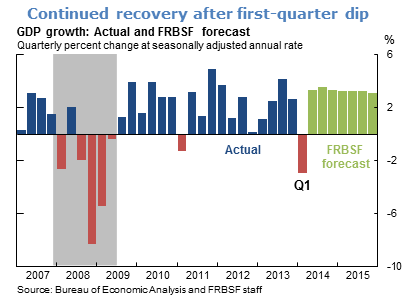
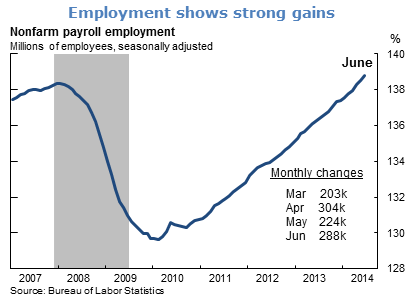
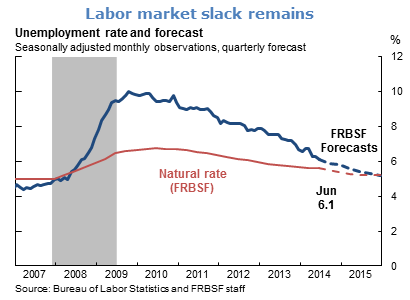
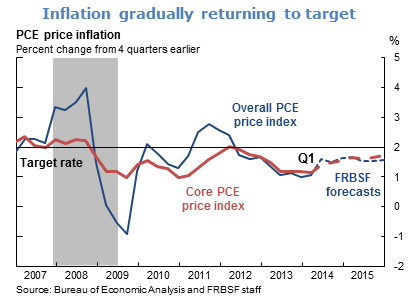
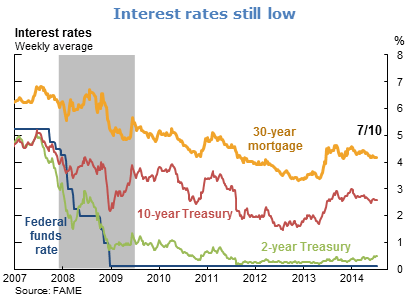
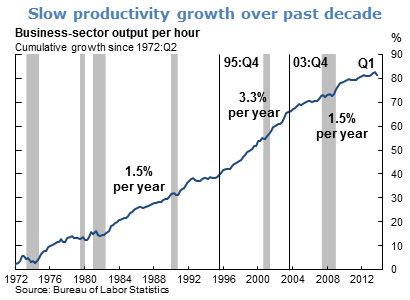
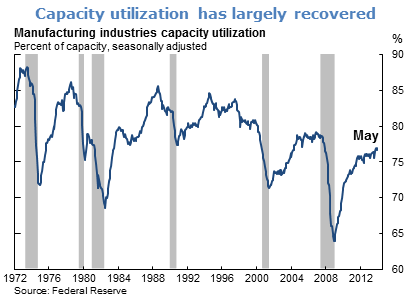
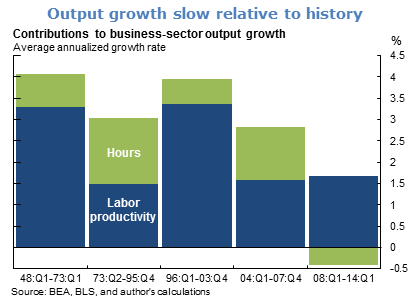
The views expressed are those of the author, with input from the forecasting staff of the Federal Reserve Bank of San Francisco. They are not intended to represent the views of others within the Bank or within the Federal Reserve System. FedViews appears eight times a year, generally around the middle of the month. Please send editorial comments to Research Library.